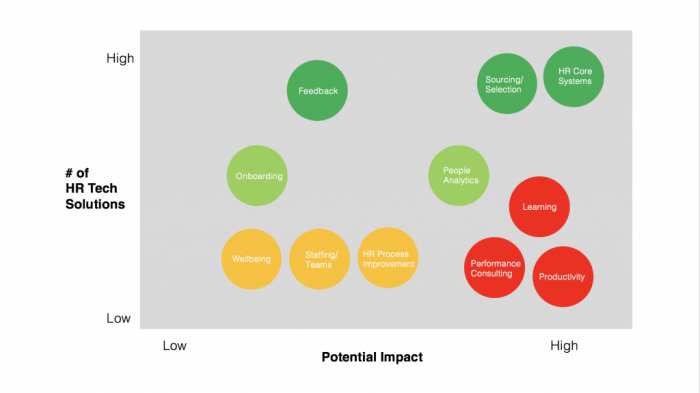Recently I presented my view on the status of HR Tech (HR Tech Trends: update). One of the conclusions: there seem to be good opportunities in the learning area.

As a follow up on this presentation, I had a short brainstorm with some network partners. The question on the table: which trends should be considered when designing innovative learning solutions? This is a short summary of our conversation (that will be continued ………..).
Learning and Development trends
More focus on microlearning
Learning content is more and more made available in small chunks. On elearningindustry.com we found the following definition: “Microlearning is a way of teaching and delivering content in small, very specific bursts”. Microlearning is also related to the trend from just-incase to just-in-time learning: you learn new skills and knowledge best at the moment when you really need it and can apply it immediately.
Learning integrated with work flow
It makes a difference if an employee must search actively for a learning module that he or she needs, or that the module is offered at an appropriate moment in the workflow, based on real time observations of the behaviour the employee. If there is a meeting with company X in your diary, you personal learning aid might ask: “Do you want to learn more about company X?”. If you are stuck in designing a difficult Excel macro, the Excel chatbot asks you: “Can I help you to design the macro?”. If you have a meeting scheduled with an employee with a low performance rating (the computer get this information in the HRIS), you are offered a short module “how to deal with under-performing employees”.
The solutions become even better if your individual learning style and the level of your capabilities are considered.
Content is everywhere
The availability of good learning content seems to be less of an issue. There is an abundance of learning material available. The problem is how to find it, how to match content to your needs and how to get an indication of the quality of the content. Various learning platforms are available that can help people to find the most appropriate content (such as Edcast, LinkedIn Learning, Coursera and Degreed).
Tech can help for better feedback
Football clubs track their players almost 24/7. On the field, during the training, and while they are sleeping. The data is used to give the players feedback they can use to improve their performance. The combination of data gathered by intelligent devices combined with the observations of the trainers, increases the quality of the feedback. Gathering realtime data on the individual performance of employees is still not widely used. There are privacy issues, and if the data is misused by the employer the trust of the employees goes down. Making sure the data is only used for development can help. Using individual trackers in the workplace will increase, and if the organisation does not provide them, employees will bring their own (like the FitBit and the iWatch). Some tools that show a glimpse of the direction learning tech tools can take are Joonko and Rescuetime.
Employees in the drivers seat
Many learning and development initiatives are initiated by the organisation. Often the approach is top-down. What do new employees need to learn? What is the knowledge we expect all the people on this level to have? How can we disseminate the global health & safety standards? Often the approach is not only top-down, but also very generic. Learning solutions are designed for groups of people, and not tailored to the individual needs, wishes and learning styles of individual employees. In our article “8 major HR trends for 2018” we noted two trends that are relevant in this context. We called them “Power to the People” and “From Please the Boss to Employee Intimacy“. Employees will start to look for solutions that can help them to become better. Not only for their current assignment, but also for future assignments (maybe at another employer).
Looking for financial benefits
Maybe there is a reason that developments in Learning Tech are slow. It has always been difficult to calculate the ROI of investments in learning and development. Currently there is more focus on productivity. Innovative Learning tech should be able to help to drive productivity up.
Onboarding is typically an area where the benefits can be calculated relatively easy: the steeper the learning curve of new employees, the faster they are reaching the required productivity level. The investment in clever innovative onboarding tools is quickly earned back.
Tom Haak Director of the HR Trend Institute








